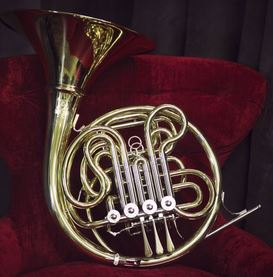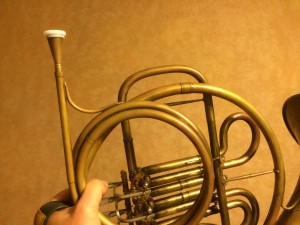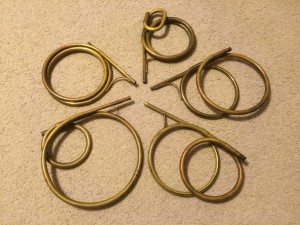One exciting development in the horn world is that Paxman has not only expanded their product line but also has expanded their dealer network. In particular, a store local to me in Arizona, Milano’s Music, just received their first shipment of horns from Paxman, including Paxman Academy and Paxman Series 4 double horns.
Many people have said that it was only a matter of time until the Chinese brass instrument makers figured out how to produce very good French horns, and that time is clearly now. Paxman has been working for a number of years now with Chinese maker Briz, who only produces French horns (website here, in Chinese). While Briz is a new manufacturer (founded in June of 2000), Paxman itself has been producing horns since 1945 and needs no introduction as a leading maker of high quality horns. Clearly Paxman and Briz have in this partnership developed a very fine line of horns that it is time to be highly aware of.
In recent years I have had two brief encounters with the Chinese Paxman horns, both mentioned previously in Horn Matters. I was “particularly interested” at the Australia IHS symposium in the single Bb Paxman Academy horn, and at the UNT IHS symposium I was “very impressed” by the Paxman Academy double horn.
And that brings me to my brief trials this week here in Arizona. My overall first reaction is this: these are very solid horns.
![Paxman-Series-4]() I will start with the Paxman Series 4. This model was, according to their website, introduced in 2008. It is priced somewhat below that of the very comparable Yamaha 667 and Hoyer G-10 models, and first impressions make clear that the Series 4 horn is a contender!
I will start with the Paxman Series 4. This model was, according to their website, introduced in 2008. It is priced somewhat below that of the very comparable Yamaha 667 and Hoyer G-10 models, and first impressions make clear that the Series 4 horn is a contender!
The very first impression of any horn is how it feels in your hands. At this point a brief aside is appropriate. About 15-20 years ago I tried my first Chinese double horn at a show. It was terrible in basically every way. It was very heavily constructed (a tank!), the mouthpiece did not even fit in the receiver correctly (!), valves felt bad, harsh sounding, etc. It simply screamed out that it was a cheap, poor quality instrument. In contrast, the Paxman Series 4 horn gives every first impression of being an excellent horn. The instrument looks to be well designed and constructed, and I immediately liked the feel of the quiet, string action valves very much and the weight and balance.
At Milano’s I was able to test it comparing it with a Hoyer and a Yamaha side by side. The Paxman feels more like the Yamaha in terms of “feel” in the hands — the ergonomics of the left hand are very good, and the overall weight is similar — and the sound is also generally similar. That said, and maybe I have been conditioned a bit as an owner of three Paxman horns, but it really has the look and feel of being a Paxman, with no feeling of it being “cheap” in any way.
The wrap is what is sometimes called a “modified Geyer” wrap. I think the only real plus the Yamaha and Hoyer have compared to the Series 4 horn is I suspect that they will prove easier to remove water from, as this type of Geyer wrap has the extra “knot” (loop) of tubing on the F side rather than the more open F side of the traditional Geyer/Knopf design. High and low the horn plays well, with a very solid high Bb. This would make an excellent instrument for a strong intermediate player or a serious amateur. I have had a number of people come audition for me at ASU — potential performance majors! — who were playing horns that were clearly not nearly as good that cost more. In total this is a horn that really cannot be ignored at the price point.
![Paxman-Series-3]() The other horn I tried is the Paxman Academy double, also known as Paxman Series 3. The horn is generally similar to the Series 4 horn already described, but has a slightly different wrap (look at the the F horn tube coming out of the first valve slide on both horns) and it sells for just over half as much as the Series 4. It also looks to have also been built very well. The sound is not quite as good as that of the Series 4 but still compares favorably to instruments sold for twice the price — it does not have the shrill, harsh edge I associate with a very cheap horn.
The other horn I tried is the Paxman Academy double, also known as Paxman Series 3. The horn is generally similar to the Series 4 horn already described, but has a slightly different wrap (look at the the F horn tube coming out of the first valve slide on both horns) and it sells for just over half as much as the Series 4. It also looks to have also been built very well. The sound is not quite as good as that of the Series 4 but still compares favorably to instruments sold for twice the price — it does not have the shrill, harsh edge I associate with a very cheap horn.
On the example I tried the high range was quite free with a fine high Bb but the low range was somewhat unresponsive (while the Series 4 horn was very good high and low). A possible factor on this is the slightly simplified wrap that eliminates that more rounded bend on the F horn. But being aimed at younger students I am sure that was probably the right business decision from the makers, to set the horn up to favor the high range and save a bit on construction costs.
As with the Series 4 the ergonomics of the left hand are excellent with the same, quiet string action valves. This horn is definitely one to consider for school program purchases, as if played back to back against traditional USA brands this horn will certainly not disappoint. The only “negative” I could see is that it is not as heavily made as some other horns intended for a school market. In terms of playing qualities this is a plus, but I suppose it might dent more easily? But a horn built like a tank is no fun to play and sounds like a tank, I think Briz/Paxman made the right decision in not using overly heavy/thick materials on this instrument.
Series 5 is the top level instrument in the line of Paxman/Briz horns and is their newest model, described here in the Paxman website. I have not had the opportunity yet but I very much want to try one of these. It has what I have been told is a “more complex tone,” of the type we associate with a fine custom horn. The Series 5 horn hits a little higher price point and is built on a more open pattern very similar to the venerable Paxman 20. From what I am hearing this model is one that a professional really would consider playing, it is that good. I look forward to the opportunity to try one!
To repeat one point, both of these horns appeared to me to be very well made, and both models have been in production now for a while. If Briz maintains this level of quality, these horns and their related horn production will certainly be seen more and more worldwide.
One other final note on the horns and my testing. For my trials I had a Laskey G cup mouthpiece and a similar Moosewood BA mouthpiece with a European shank available to me. These horns work well with a standard shank mouthpiece, no European shank is necessary, the horns playing better with the standard shank. Yet another good decision on the part of the maker in relation to our market in the USA.
There are now several dealers of Paxman Academy horns in the USA and it is to be hoped that there might be even more by the time new horn sales pick up for dealers in the fall. It is also worth noting that other Briz branded horns are sold directly in the USA through at least one dealer (Google it, they produce a Kruspe wrap model as well), and then there is also the Pope-Balu Briz Alliance horn that was recently introduced that I would very much like to try too, a Knopf wrap horn. Based on my brief observations with the Paxman-Briz horns this maker is positioned to sell in the coming years a large quantity of horns in the USA. I feel there is certainly a market for these horns — if the number of locations where you can try one in person expands — and at the price points they hit the days of the traditional USA band instrument makers may be numbered. The fit and finish and the playing qualities combine to make these horns an excellent value.
Photos from Milano’s Music website, with permission
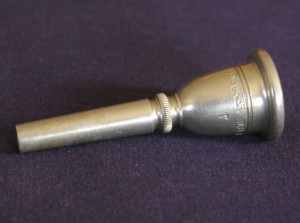 Exhibit “A” is this Mirafone Decker model T Wagner tuba mouthpiece from the 1980s. It is solid nickel silver (which is somewhat unique in itself–it is not plated) and very cool looking, turned to look like a miniature tuba mouthpiece with a horn rim and stem.
Exhibit “A” is this Mirafone Decker model T Wagner tuba mouthpiece from the 1980s. It is solid nickel silver (which is somewhat unique in itself–it is not plated) and very cool looking, turned to look like a miniature tuba mouthpiece with a horn rim and stem. I also have a Mirafone Decker model D descant horn mouthpiece that is made from the same blank shape and it also works well on our tuben. I do love the look, but standard horn mouthpieces really do work fine, speaking generally, on Wagner tubas. This photo shows that cup and also the Wagner tuba mouthpiece from the rim end.
I also have a Mirafone Decker model D descant horn mouthpiece that is made from the same blank shape and it also works well on our tuben. I do love the look, but standard horn mouthpieces really do work fine, speaking generally, on Wagner tubas. This photo shows that cup and also the Wagner tuba mouthpiece from the rim end. There are basically two options besides testing the instruments of friends or teachers. There are dealers (some advertise here in Horn Matters, some don’t) that carry a good stock of new and used horns. Go visit them; it is well worth the investment of your time and energy. The other good option is to go to a horn workshop or other horn event.
There are basically two options besides testing the instruments of friends or teachers. There are dealers (some advertise here in Horn Matters, some don’t) that carry a good stock of new and used horns. Go visit them; it is well worth the investment of your time and energy. The other good option is to go to a horn workshop or other horn event.

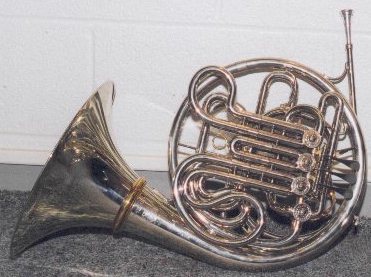 That all being said, a final tip would be some horns are just easier to play in tune than others. If you have done all the right things in terms of drones and training but pitch is still an issue it is time to think about changing your horn. Even among horns I own I can tell some are better than others for ease of playing in tune, and actually the two most expensive ones are the easiest to play in tune. Food for thought.
That all being said, a final tip would be some horns are just easier to play in tune than others. If you have done all the right things in terms of drones and training but pitch is still an issue it is time to think about changing your horn. Even among horns I own I can tell some are better than others for ease of playing in tune, and actually the two most expensive ones are the easiest to play in tune. Food for thought.
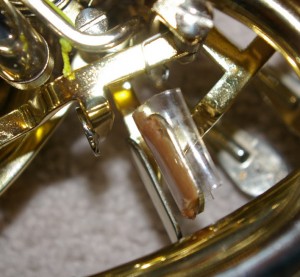



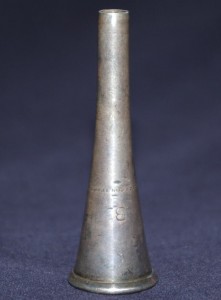

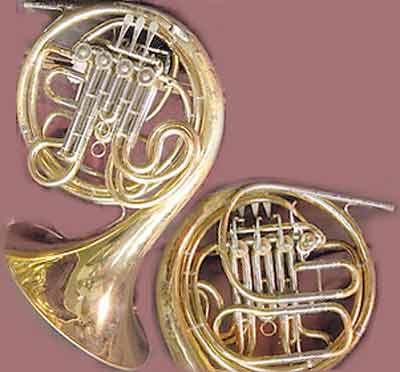 For example this instrument, the photo being linked from
For example this instrument, the photo being linked from  Normally valve is usually used and tuned to be used as a stopping valve, such as in this prior article:
Normally valve is usually used and tuned to be used as a stopping valve, such as in this prior article:
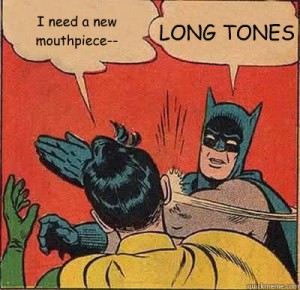 As a horn teacher I have to say this meme, while it sounds like good advice, is very wrong.
As a horn teacher I have to say this meme, while it sounds like good advice, is very wrong.
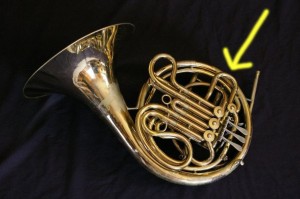
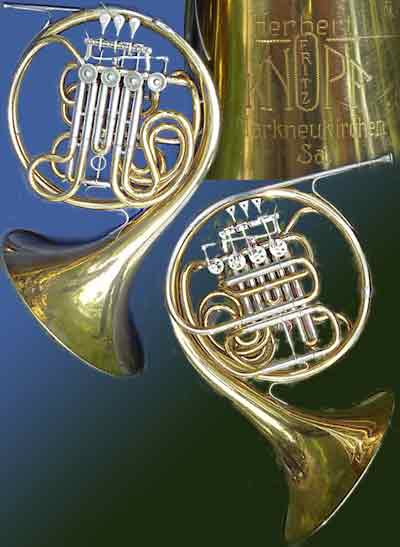 A good place to see a lot of horns is
A good place to see a lot of horns is 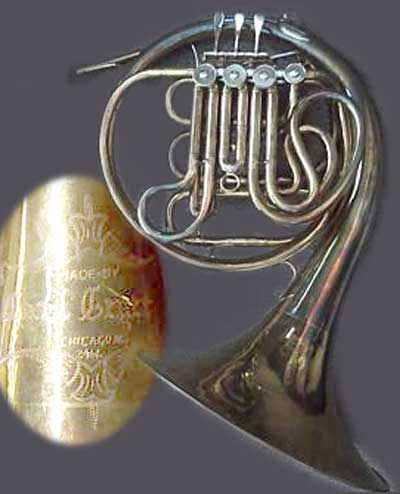 The horns he was famous for were ones of this design, again seen in this
The horns he was famous for were ones of this design, again seen in this 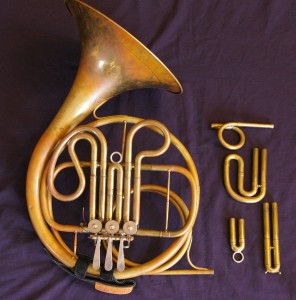 Which brings us back to Strauss and the two types of horns at that time. One of my goals over many years has been to make a recording on a 19th century style horn.
Which brings us back to Strauss and the two types of horns at that time. One of my goals over many years has been to make a recording on a 19th century style horn. 